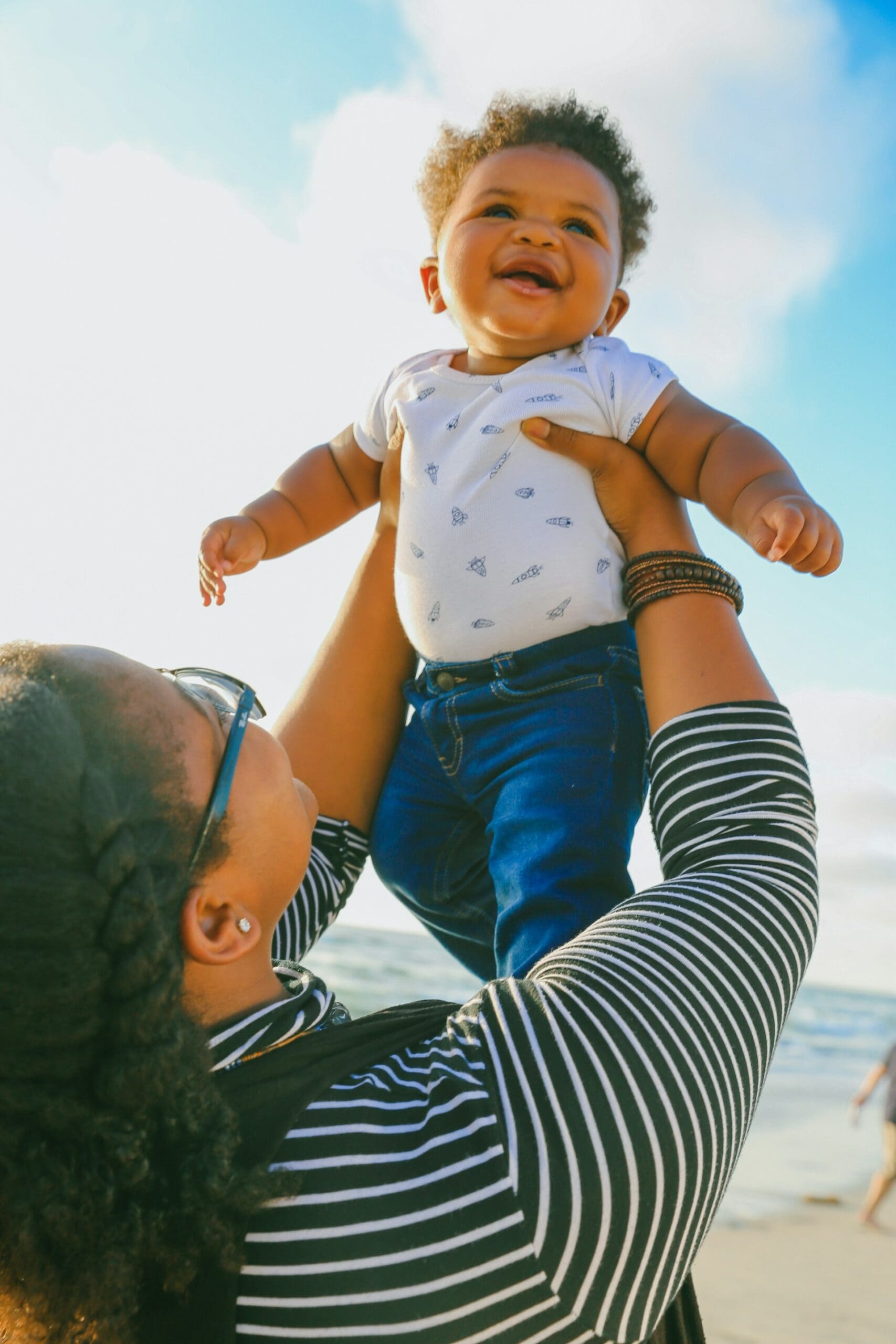By Michael Brice-Saddler
See original post here.
In 2022, the D.C. government announced a pilot program that offered 132 new and expecting low-income mothers $10,800 over the course of a year — no strings attached — intended to assess how unconditional cash payments could improve their families’ outcomes and economic mobility.
Facilitated by the nonprofit Martha’s Table, the $1.5 million Strong Families, Strong Futures pilot was limited to families in Wards 5, 7 and 8, which contain some of the District’s poorest neighborhoods. The city’s program was based on similar successful cash-transfer pilots that have now been modeled in at least 100 U.S. jurisdictions and drew 1,553 applications in just three weeks, requiring a lottery system to winnow down the final group.
All 132 mothers had to choose whether they wanted 12 monthly payments of $900 or the entire amount immediately in a lump sum, a unique feature of D.C.’s pilot. About 75 percent chose the lump sum — which was better for those also receiving government benefits, for whom monthly payments from the pilot were more likely to be flagged as additional income, potentially affecting their eligibility, said David Lloyd, the deputy chief of programs at Martha’s Table.
The Washington Post spoke to several mothers throughout the year. Some used the funds to set up their first savings account or buy baby formula. Others used it to live the lives they had always dreamed for their families, helping cushion their savings to buy a new home — or just live large for a week: a new hairdo and a trip to Miami with new outfits every day for the children.
Here is how their lives were changed.
Canethia Miller
Mother of three
Payment choice: Lump sum of $10,800
For Canethia Miller, 27, being accepted into the pilot felt like a stroke of good fortune: She had missed the application deadline but submitted her paperwork anyway and eventually made it off the waiting list.
She was a stay-at-home mom when her third child, Nazir, was born in summer 2022, making things work financially through a host of public benefits. Her two-bedroom apartment in Anacostia is subsidized, and with Temporary Assistance to Needy Families (TANF) as her only income, her rent payments are about $120 a month. Food stamps and WIC, a program that offers nutritional support for low-income mothers, offered another lifeline for Miller to provide for her infant and two older children, ages 5 and 8. But making these benefits last through the month is another story.
“Groceries last us the first three weeks of the month, then it’s trying to figure out the last week of my benefits,” she said. “It lasts, but it cuts close.”
By August 2022, Miller was looking for affordable day care for Nazir and part-time work, but she struggled to find a job with hours flexible enough to get her other children to and from school. She had pursued a bachelor’s degree in social work but paused her own education to focus on her growing family.
Then came the pilot. After setting aside some of the money for essential expenses, she made a major decision on how to spend the bulk of it.
“Some of it I just left alone. The other side is, I wanted to blow it. I wanted to have fun,” she said. “[My kids] got to experience something I would never have been able to do if I didn’t have that money.”
The five-day, $6,000 trip to Miami was a dramatic upgrade from the Ocean City and Virginia Beach visits that Miller’s family was used to. Joined by the children’s father, a boat tour exposed them to million-dollar homes and luxury yachts. Her kids went to a dinosaur museum and saw animals in Florida’s swamps they had never seen before. Miller still talks about trying Benihana, a Japanese steak and sushi restaurant, for the first time.
Some of the money went toward preparations for the trip: new clothes, shoes, gadgets and toys. “Every outfit they wore was new,” she added.
In what she called a rare moment of self-indulgence, Miller spent $180 ahead of the vacation to get her own hair and nails done, a glow-up from her usual inexpensive short, dyed style. Her eyes light up when she swipes through an album of photos from their trip.
[ Universal Basic Income Has Been Tested Repeatedly. It Works. Will America Ever Embrace It? ]
“Do you know how good I look in this picture?” she exclaimed. “I didn’t have to look like a working, stressed mom.”
But Miller says the trip served a greater purpose. On a normal day, she tries to encourage her kids to work hard academically by showing them videos of students graduating early or being praised for doing well in school as the key to success. At Miami Beach, they got to see luxury firsthand.
She also wants to set a good example: Miller says she was never taught about financial literacy in school or by her parents. But the infusion of cash, and financial literacy courses offered through the program, has helped her with some firsts. She opened up a savings account, aiming to keep at least $50 in it. She used the remaining $4,000 or so from thepilot in a matter of months, mostly on bills and a used car.
“A lot of communities in my area don’t know the financial gain of credit, saving for your kids; that’s why we’re broke, that’s why we don’t have nothing to pass down or no house to give down,” Miller said. “I’m trying to get to the level where I’m passing something down that really matters, so I can be set and my kids can be set, and they don’t need to push so hard like I’m doing now.”
Meanwhile, she coaches flag football part time and is taking a free course on information technology at a local adult charter school. She expects to graduate in February with a remote job that could pay $30 an hour — a development she credits to increased confidence from the pilot.
Erika James
Mother of two
Payment choice: Monthly payments of $900
When Erika James became pregnant in 2021, her mother offered congratulations — and a warning.
“It’s going to be hard,” her mother recalled saying, “when you’re already struggling financially.”
It was true. James, who turned 32 that year and was raising an 11-year-old daughter, had moved back into her mother’s Maryland home months earlier to save money in hopes of moving into a bigger apartment. She was also $2,000 behind on her car note. She gave birth to her son, Loyal, in January 2022 after a high-risk pregnancy that forced her to stop working as a mail carrier and then return at half time.
Already stretched thin managing her finances, James moved back to D.C. with one more mouth to feed. It was around then that a friend sent her a text about the pilot, which had just been announced by the city and seemed too good to be true. Her friend urged her to apply.
For James, now 34, enrolling in the program was an opportunity to examine her own financial strengths and weaknesses. For as long as she can remember, she has been putting nearlyher entire paycheck into the savings account of her oldest child, De’Vire, taking out money for bills and other expenses. While she has to dip into the funds pretty regularly, it’s a ritual that James says helps her stay disciplined with spending.
She tried the same strategy to manage the monthly pilot payments.
“If it was in my account, it would just be swipe, swipe, swipe — it’s better to put it in her account,” James said. “I look in my bank statement and see De’Vire and I want to touch it, but I know I can’t.”
But after expenses began piling up, James started to wonder if she should have gone with the lump sum instead. Her intense schedule with the U.S. Postal Service left her with little time to dwell on it.
Her long mail routes enabled James to take advantage of resources offered by the pilot, like Mommy Mondays sessions that she listened to through Zoom. Around the time she gave birth to Loyal, James’s doctor determined she was depressed and gave her a referral for mental health support. But it wasn’t until one of the monthly Zoom calls with the mothers that James realized just how many others had faced similar challenges.
“They explained you can go through postpartum depression for like two years,” James said. “My own mom didn’t even really know how to recognize it.”
In addition to paying down her debt, James had several goals for herself at the start of the pilot, like purchasing a home and obtaining her commercial driver’s license, which would allow her to work at night and more easily navigate child care. Her demanding work schedule had caused her to miss some milestones with De’Vire, like dance recitals. She hoped that the supplementary income from the pilot could help her create more balance during Loyal’s first year.
“I was always at work. But the older I got, I learned sometimes, the mail just has to sit there,” James said. “I don’t want to miss those moments with my son.”
She used half of one monthly payment to throw Loyal’s first birthday party at an indoor playground for toddlers in Capitol Heights, Md., pulling out all the stops to ensure the celebration was special. The venue’s cheapest package was $525. There were other costs, too: $17 for a cake from Sam’s Club and $23 to fill goody bags with snacks and toys.
James’s mother Loretta Coles attended. Though she had early concerns, Coles said she admired James’s choices around how to use the money — and was even more struck by the ways her daughter was now discussing her mental health.
“She’s stayed on top of it. I see her maturing and being a lot more responsible when it comes to life,” Coles added. “I tell her to focus on what you need to do. And not just blow that money, because once this is all over, you’re going to be in the same situation.”
Those words weighed on James’s mind: How would her lifestyle change once the monthly checks ceased?
She wished she had taken advantage of the financial counseling offered by Martha’s Table, but she had missed emails to sign up because she was tied up with work. She regretted not using any of the money to take care of herself.
“I think I should’ve took at least $200 and spent on myself. But every time I blink my eye it’s a bill,” James said one May afternoon while on her mail route. “You look back on things and say: ‘Well I should’ve did this,’ and that’s how I feel. Maybe I could’ve did something different. But the money did help me a whole lot.”
How would James navigate these expenses when the monthly payments came to an end? She paused.
“I don’t know,” James said.
Stacie Adams
Mother of four
Payment choice: Lump sum of $10,800
Stacie Adams has ambitious goals — some of them plastered on her bathroom wall, where she keeps her vision boards.
The boards haven’t changed much in the past few years. That’s because they’ve included goals that she has dreamed about for years, like buying a home and advancing her career.
Originally from Ohio, Adams moved to the District at 18 and got her bachelor’s degree from Howard University, where she studied psychology with a minor in Arabic studies. She got her master’s degree in social work at Catholic University. In March, she landed a new D.C. government job — an opportunity she learned about at a career fair hosted by the mayor’s office.
Adams was pregnant with her youngest daughter, Onika, in 2022 when she started receiving emails from Martha’s Table about the pilot program; she applied successfully and opted for the lump sum.
The windfall could not have come at a better time for Adams, who was let go from her $50,000-a-year job while on maternity leave after failing her social work licensing exam; she was unaware her job was contingent on her passing. And Adams was unable to immediately apply for unemployment benefits after learning that someone had fraudulently made a claim using her personal information to collect unemployment.
The $10,800 helped cover two months of rent and payments toward her car, which typically ate up half her paycheck each month. By the time Adams found another job, she had $5,000 left in her savings account.
“I’m not the best with money,” she said. “But I’m trying to be more financially responsible.”
All the while, Adams still dreamed of ditching her apartment near the Anacostia Metro station and buying a home, a process that has taken years as she has navigated the application for the city’s Home Purchase Assistance Program for first-time home buyers, known as HPAP.
Even the $70,000 salary in her latest role with D.C.’s Office of Neighborhood Safety and Engagement feels insufficient to meet all of her goals, which include traveling the world with her family. Before she started the job in the spring, Adams was already thinking about how she could get a promotion. And she still needed to retake her social work exam.
“I be thinking: ‘Am I doing this right?’” she said. “You never know if you’re doing it right.”
The contingency funds had given her a runway to think more strategically about her career and her family’s future. She has earned nearly $7,000 through a savings account match program that she learned about because of Martha’s Table, funds she can use to invest in her first home.
Thanks in part to her boosted savings, this past summer Adams finally submitted her HPAP application and was approved — she is on the cusp of closing on a three-bedroom home in Fort Dupont with a backyard. And she has started a certificate program at Georgetown University focused on community health.
She is now readying her growing family for a move. Adams in December gave birth to her fourth child, a baby girl named Ostacia.
“The program definitely helped, especially when I was in a rough spot and didn’t have the money,” Adams said. Assessing the pilot, she said more mothers should have taken advantage of the financial literacy courses and other benefits.
“It wasn’t mandatory, but maybe it should have been. A lot of people haven’t seen $10,000 and might have spent it right away — even me, I have issues with finances as well,” Adams said. She added later: “Sometimes I do wish I put a little money into my self care. Maybe I’ll get to a point where I’ll be like that.”
What comes next?
Did it work? Program coordinators at Martha’s Table say that over the pilot’s duration, the moms reported spending the majority of their funds on needs such as housing, food and transportation. Comparing responses from the middle of the program’s first year to the closing months, participants increasingly said they were using the money to build up cash savings for the future, illustrating a behavioral shift toward financial security — a core goal of the pilot.
Lloyd, the deputy chief of programs at Martha’s Table, said he received strong feedback about the community created among the pilot’s participants.
At a sparsely attended event in May for moms to celebrate the conclusion of the pilot’s first year, self-assessments on how they had used money from the pilot ranged widely.
Marissa Rayford, 32, a first-time mom who learned about the program on Instagram, said she was able to open a savings account as well as a whole life insurance policy using some of the funds, hoping to one day borrow against it for her child’s future college tuition.
Saleemia Quigley, a 41-year-old mom who took the lump sum, said it helped her feel a sense of “peace” even though the fathers of her 17-year-old and 1-year-old have been in and out of their lives. She was able to catch up on credit card bills and rent payments she had fallen behind on, then paid her $1,100 rent in advance for a couple of months.
But Quigley chastised herself for not using the funds to boost her savings account and wondered if the monthly option would have forced her to have more discretion.
“To get picked [for the program], out of all those people, it’s a blessing,” Quigley said. “But I did splurge, I ain’t going to lie. I went shopping, clothes — stuff I didn’t need. It was like, ‘I paid my rent, so I can go ahead and do this.’”
Stacia West, co-founder and director of the Center for Guaranteed Income Research at the University of Pennsylvania, said some of the mothers’ critiques of themselves are unfair to them.
“It’s an internalization of the systems that are incredibly oppressive to folks that are participating in these programs — like if they weren’t able to radically change their life in a year, it’s because it was somehow their fault,” West said. “You will look at yourself in the end and not say, ‘Wow I did these great things,’ but instead say: ‘I still didn’t live up to what they wanted me to be.’”
But West said that while there has been a surge in one-year pilot programs throughout the country — with data showing benefits for participants such as reductions in anxiety and boosts in physical health — there has been much slower movement toward permanent policies. Additional data from multiyear programs, she said, could help change the tide.
“No person is radically going to change their life because they receive a year of guaranteed income. Most likely those changes are going to take a longer period of time,” West added. “So smaller experiments that have a longer duration I think are more scientifically valuable right now.”
Last summer, the D.C. Council in its budget process voted to extend Strong Families, Strong Futures for another year. Coordinators at Martha’s Table are thinking through the most strategic way to move the program forward.
“We know at some point it will end,” Lloyd said. “But we’re excited about the impact one year has had on the moms’ lives.”





















